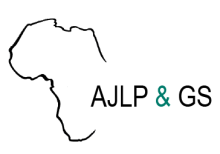/ library resources
Showing items 91 through 99 of 542.Iron deficiency anemia (IDA) affects more than 3.5 people in the developing world. More than half of pregnant women (56 percent) and 44 percent of nonpregnant women are anemic (ACC/SCN 2000).
Water, sanitation, and hygiene can have a profound effect on health and nutrition.
According to a 2008 World Bank Report, Uganda is among the countries with the youngest population and the highest youth unemployment rate of 83%.
Land and natural resource tenure security is a central yet often neglected area for economic development and poverty reduction in the developing world. Land is fundamental to the lives of poor rural people. It is a source of food, shelter, income and social identity.
Securing land rights of all including the youth to allow for investment is very imperative.
Africa is a continent of youth. However, its high rates of youth unemployment linked to high levels of landlessness suggest a close correlation with youth poverty and access to land.
The Continental Land Policy Initiative, now the African Land Policy Centre, has made tremendous progress in generating knowledge on land governance since inception in 2006.
The department of Caquetá in the Colombian Amazon plays a crucial role in addressing greenhouse gas (GHG) emissions from food systems, primarily stemming from land use changes, such as the conversion of forests into pastures, and agricultural practices.
The International Fund for Agricultural Development (IFAD) and the Federal Government of Nigeria implemented the Nigeria Value Chain Development Program (VCDP) across six Nigerian states with the objective to improve farmer organizations’ collective efficacy, and alleviate poverty via improving
Paginação
Land Library Search
Through our robust search engine, you can search for any item of the over 73,000 highly curated resources in the Land Library.
If you would like to find an overview of what is possible, feel free to peruse the Search Guide.




